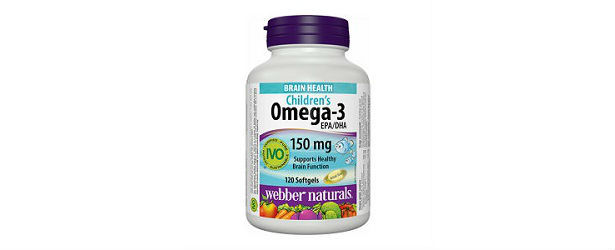
Omega 3: The Bigger Picture
Omega-3 fatty acids are an important nutrient for the body. The body does not make its own Omega-3 fatty acids, so you need to get them from foods that you eat. Understanding Omega-3 fatty acids means we need to understand the different types, what they do, and where to get them. Let’s take a look at the 3 different types.
 DHA – DHA develops brain cells and helps with memory, cognition, and mental health. They add it to baby formulas, and pregnant women should take in adequate DHA during pregnancy. The elderly may also get some benefits for dementia and memory loss. Find DHA in: wild salmon, fish oil supplementation, and shellfish.
DHA – DHA develops brain cells and helps with memory, cognition, and mental health. They add it to baby formulas, and pregnant women should take in adequate DHA during pregnancy. The elderly may also get some benefits for dementia and memory loss. Find DHA in: wild salmon, fish oil supplementation, and shellfish.
- EPA – EPA may help to relieve inflammation. It can also be helpful for mental health. The body converts some DHA into EPA, and it is excreted in breast milk to babies. Older children and adults can get this nutrient in these foods: algae, seaweed, supplementation, and fish.
- ALA – ALA comes from vegetarian sources and is most commonly found in flax seeds. There are other vegetable oils and seeds that contain ALA. Our bodies don’t make ALA so we must get it from diet or supplements. Our bodies also cannot convert ALA to EPA or DHA because we don’t have the right enzymes to convert it. ALA helps our cardiovascular system and may decrease depression in some women.
How Omega 3 Works
We need Omega-3 from dietary sources because we don’t make it ourselves. It is important to understand that Omega-3 fatty acids are an important nutrient that we need to build healthy cells and tissue. The fatty acids we take in are actually Omega-6 fatty acids, and in order for them to do their job, they must be balanced with Omega-3’ fatty acids.
 If we eat too much Omega-6 fatty acids, without Omega-3 fatty acids, health issues can develop. Too much Omega-6 without Omega-3 can trigger an inflammatory process in the body. Try to avoid eating too much vegetables, corn, and grain fed meats, as these are high in Omega-6 fatty acids. Increase your intake of Omega-3 foods including; wild caught salmon, flax and flax seed oil, grass fed meats, and nuts.
If we eat too much Omega-6 fatty acids, without Omega-3 fatty acids, health issues can develop. Too much Omega-6 without Omega-3 can trigger an inflammatory process in the body. Try to avoid eating too much vegetables, corn, and grain fed meats, as these are high in Omega-6 fatty acids. Increase your intake of Omega-3 foods including; wild caught salmon, flax and flax seed oil, grass fed meats, and nuts.
Omega-3 fatty acids have some effects on your body by itself, but some things it does for you require a little Omega-6 fatty acids. Some Omega-3 fatty acids are converted to another to do yet another job. This is all a complex process and that is why a balance is very important.
In order for all the fatty acids to work together or convert, make sure you do eat some Omega-6 fatty acids, but take in more Omega-3 fatty acids in order for them to work as a “team.” If you do eat too many Omega-6 fatty acids, you will cancel out the good effects of the Omega-3. It happens in a 3:1 ratio. Always try to eat 3 times the amount Omega-3 fatty acids and 1 part Omega 6 fatty acids. A healthy example would be 1/3 cup vegetable oil (Omega-6) to a cup of flax flour (Omega-3) when making muffins or bread. This formula can basically be used in any recipe.
Conclusion
Getting the right amount of Omega-3 fatty acids and Omega-6 fatty acids help all the fatty acids work together in combination to build healthy cells. You don’t have to eat a strict diet, but make sure to get a healthy variety of different foods, so you get all the right fatty acids.
TOP 5
OMEGA3Supplements |
|||||
| Omega3 Premium | Dr. Sears OmegaRx | Purity Products | Nordic Naturals | Nature Made | |
|---|---|---|---|---|---|
| 1 | 2 | 3 | 4 | 5 | |
| Price (1 bottle) Price (4 bottles)(*best value) |
$49.95 $138.00 |
$50.95 $305.70 |
$46.95 $281.70 |
$69.95 $419.70 |
$25.95 $155.70 |
| Overall Rating | 99.85% | 89.20% | 82.60% | 76.30% | 72% |
| Effectiveness |





|





|





|





|





|
| Speed of Results | Extremely Fast | Good | Average | Average | Slow |
| Quality of Ingredients | Premium | Good | Good | Average | Unknown |
| Customer Satisfaction Evaluation | 99.40% | 84% | 79%% | 72%% | 61%% |
| Safety Evalutation | Safe for Use | Safe for Use | Safe for Use | Safe for Use | Safe for Use |
| Customer Service Rating |





|





|





|





|





|
| Reorder Rate | Highest | Good | Good | Average | Average |
| Return Policy | Risk Free | Risk Free | Risk Free | No guarantee | Unclear |
| Success Rate | 99.40% | 81.10% | 74% | 71.20% | 62% |

 Subscribe Now
Subscribe Now











